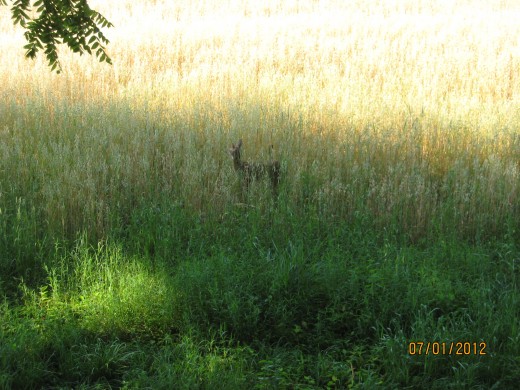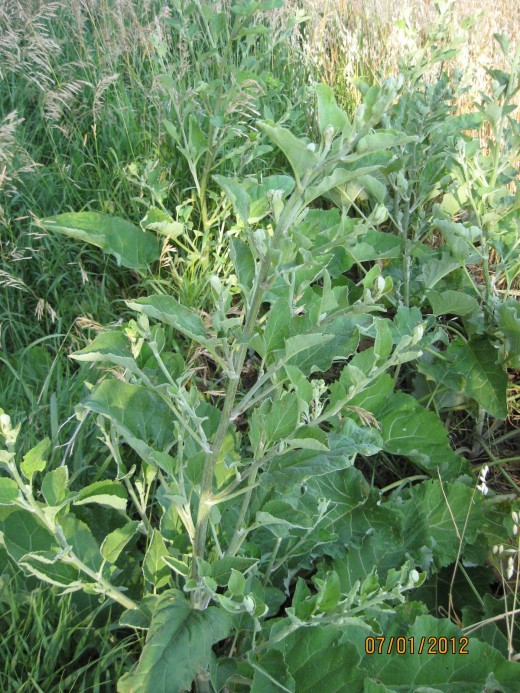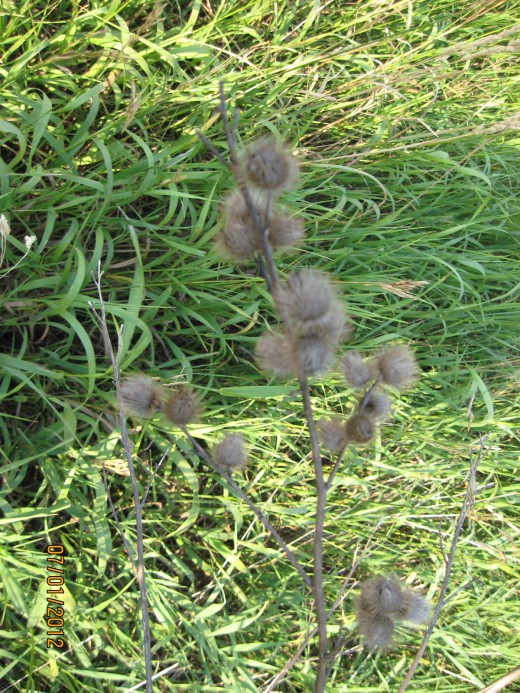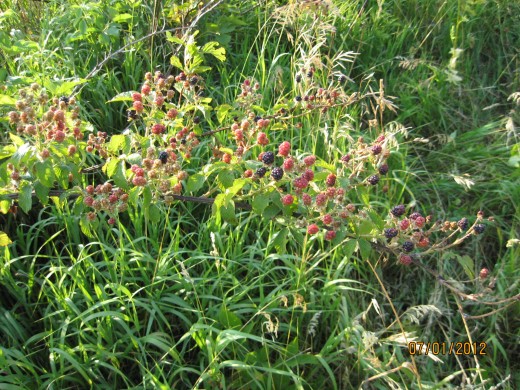Walk At The Farm, With Pics
A Deer Fawn In Oats

A Stroll Around The Family Farm
Last weekend, I walked the limits of my family farm, in Northern Illinois, from the woods to the fields, and took pictures of the interesting things I saw. Edible plants. White-tailed deer. Farm buildings and machinery. Scenery. I hope you enjoy.
I went first to a tree stand used by hunters in the winter. I sat there for about half an hour and saw, in the oat field next to the woods, two half-grown fawns, still with white spots. They knew I was there but didn't appear too concerned. Eventually they ambled off through the oats.
The Second Fawn

Landscape
Seen from the West edge of the farm, looking towards the barns, over a field of nearly-ripe oats. When I saw the fawns, I was sitting amongst the trees seen to the left in this picture. I was about twenty feet up in a tree.

Burdock
An interesting and useful plant, the burdock is much hated by rovers in the fall. Its prickly burs stick to clothing and are unpleasant to clean out. This plant was used to make rope by our ancestors; the root is very fibrous, and extends many feet, deep into the ground.
It is also eaten by the Japanese as a vegetable called 'Gobou'. The Japanese grow it as a crop in fields and gardens. The wild American version also is edible, and in fact is indistinguishable from the garden-grown version, if dug up in its first year. Older plants are not edible, being too stringy and tough.
This vegetable is a lot of work to harvest, as you have to dig a pit at least two feet deep around each plant to get it out. It makes a great diet food, as you burn more calories getting it out of the garden than you get back as food!
Young Burdock

Adult Burdock Showing Burs Forming

Burdock Burs. Nasty Things!

Queen Anne's Lace, AKA Wild Carrot
An attractive wildflower of midsummer, Queen Anne's Lace is also an edible vegetable, though much tougher then garden carrots.

Milkweed
Milkweed is not edible, but quite interesting none the less. It is the only food monarch butterfly caterpillars will eat. The white milky sap is sticky, and can be made into rubber, like the sap of the rubber tree.
Milkweed

Wild Blackberries
Blackberries are my favorite. This year is too dry, and the wild berries are small and seedy and not very flavorful, but I still ate every ripe berry I could find. These are growing in a weedy corner of the field.

Wild Black Raspberries

Wild Black Cherry, or, Chokecherry

Chokecherry Leaf

Wild Grape

Wild Grape

Wild Grape

Gooseberry

The Lane Back Through The Fields

The Barn

Tractors, A John Deere and Case








